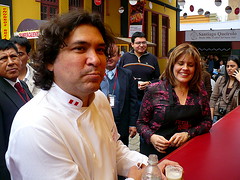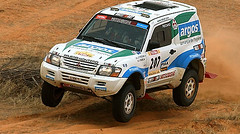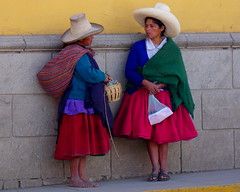This pretty little town in the Andes is different from all the others. It may be set among beautiful mountainous scenery like all the others, be populated by indigenous locals going about their daily business like all the others, be pleasantly quiet like all the…
Category: "Travel and Places"
The Great River Amazon Raft Race 2009 [Featured]
The Amazon Rafting Club, based in Iquitos, Peru, invites rafters, canoeists, rowers, paddlers and adventurers from all over the world to compete in this year’s event. The 3 day race will start in the town of Nauta on Friday, 25th September 2009, and finish in the City of Iquitos on Sunday, 27th September 2009.
Tacna’s double independence celebrations
For Peru’s southern-most region of Tacna, independence celebrations last twice as long as in the rest of the country. For it was this region that gained its freedom twice, the first time from the Spanish, and the second time from Chilean oppression.
Salineras de Maras – “Inca Salt Pans”
It was getting late. The sun had just dipped behind the mountains that tower over the Urubamba valley and the town of the same name. The salt pans outside the town of Maras, some way above Urubamba, were just within a reasonable distance to travel. So with no plans to come back to Urubamba any time soon, it was worth a shot to reach them.
Bar Restaurante Rovira
A Peruvian “Huarique” in English might best be described as a “hidden nook where food is served”. In a country like Peru where people have little in the way of resources, small simple non-pretentious restaurants called huariques are the norm. The port city of Callao, where some of the region ’s best seafood is landed, also has some of the best huariques. Many are very old and are locally very well known. In this series, we’ll visit the greats.
Charming San Blas, Cusco
San Blas. A blend of ancient, colonial and modern, religious and decadent, peaceful and lively, traditional and new – the district is a bit of a mix to say the least. It’s a hippy hang out, an artists retreat, a backpacker’s home. It’s a tourist puller and a night-life mecca. A religious site that is home to an important parish church, and also a place where locals live in the same homes that have stood here on the same streets, high above Cusco, for centuries.
Terraces of Moray
Some say Moray was an Inca laboratory used to test how different crops would perform at different temperatures. Others say it was a more of a nursery where crops were bred and cross-bred, varieties created and new foreign crops tested. A third group say it was just an ingenious means to grow warmer climate maíz or corn in the local cold climate. Whoever is right, this archaeological site of concentric circles of terraced farms, forming craters in the landscape, are a fascinating sight to behold.
The Andean Sistene Chapel in Andahuaylillas [Featured]
Mark of the must-see travel blog travel-wonders.com visits what locals describe as “the Sistine Chapel of the Americas”. Though he considers that a bit of a cheeky exaggeration, this ordinary-looking church on the outside does not fail to impress once you step inside.
Peru celebrates Independence Day with fountain of booze [Featured]
ITN News reports on the yearly tradition of the pisco fountain in the Plaza de Armas. It has long since become a popular part of the Fiestas Patrias celebrations. (Previous year’s)
Lima and Callao in Black and White
A collection of my photos of the city of Lima in black and white.
Across from Ollantaytambo
When I first visited the ruins of Ollantaytambo, I saw the Inca store houses up on the other side of the valley across the town. There’s no way I could have climbed up there back then, I was just too exhausted. I figured I’d visit them “next time”, whenever that would be. A couple of years passed, and “next time” finally came.
Inca Pisaqa – The ruins of Pisac
High above the colonial market town of Pisac, today the gateway for many tourists to the Sacred Valley, are some of the finest Inca ruins in existence. They might not be in a location quite as beautiful as Machu Picchu, or on a scale quite as monumental as Sacsayhuamán, but the stonework here is some of the best you will ever see in Peru or elsewhere. Spanning about a kilometre or two along a mountain ridge at 3250 metres above sea level, its sections are separated by natural terrain but accessible by paths and tunnels. As you march from one urban area to another along these paths, with steep drops all the way, you can’t help but be awestruck by it all.



![Potato Planting in Chinchero [Featured]](http://farm4.static.flickr.com/3198/2687152654_97a0cc29fb_m.jpg)





